Applications and Implications
Week 18
QUESTIONS TO BE ANSWERED
- what will it do?
- who has done what beforehand?
- what materials and components will be required?
- where will they come from?
- how much will it cost?
- The answers to the questions above will allow you to create your BOM, or Bill Of Materials.
- what parts and systems will be made?
- what processes will be used?
- what tasks need to be completed?
- what other questions need to be answered?
- what is the schedule?
- how will it be evaluated?
WHAT WILL IT DO ?
My final project for the Fabacademy 2018 will be a plug to control devices for sous-vide cooking.
This way of cooking, also called precision cooking, needs to maintain a water bath at a constant temperature for a fixed period of time.
The foods are sealed in plastic bags after vaccuum.
It is also possible to cook this way using glass containers.
After researching the different devices that are available on the market or made in DIY,
I chose a solution that seemed extremely simple. Almost too simple ...
I decided to focus on a plug with electronics to connect to an immersion heater, a rice coocker or an electric hob.
This plug will have to:
- Measure the temperature with a waterproof sensor
- Allow to adjust a set temperature
- Allow to adjust a set time to maintain this temperature
- Control a 220V current circuit to plug the immersion heater, rice coocker or an electric hob.
They will maintain the set temperature for the set period of time. - Notify me when it's done
WHO HAS DONE WHAT BEFOREHAND?
Commercial version
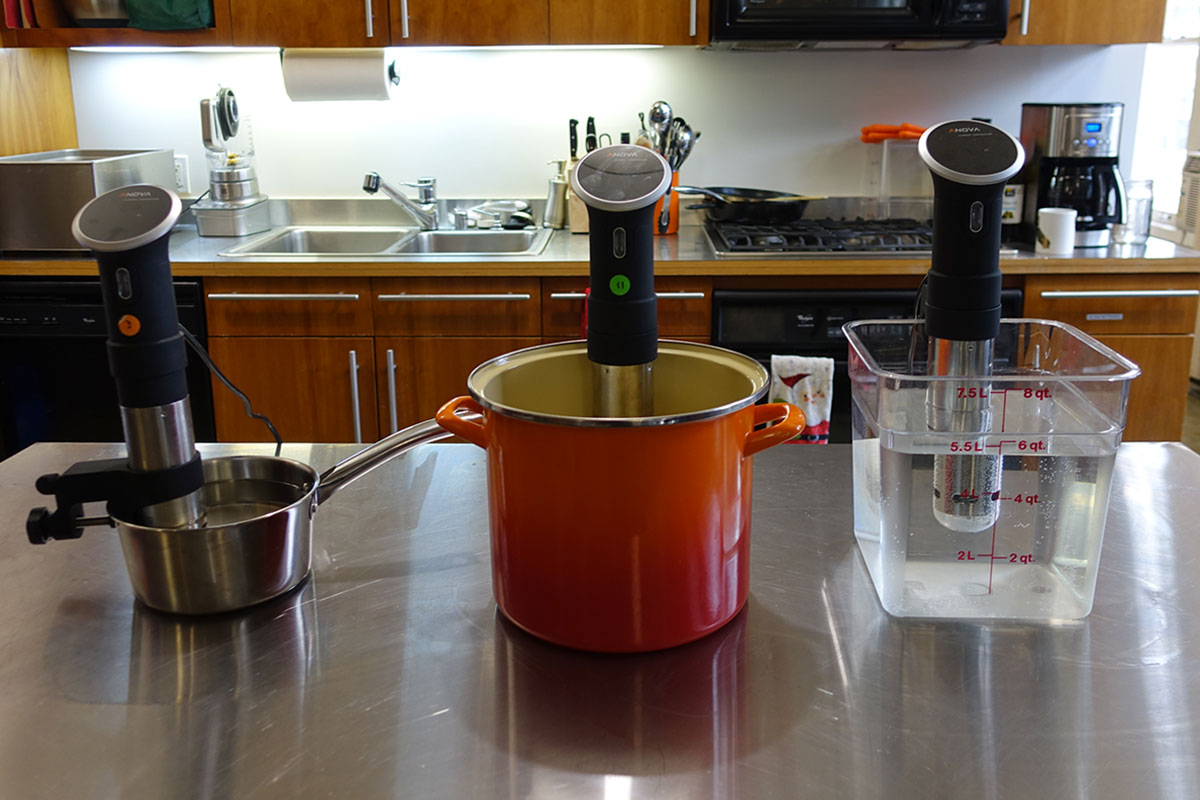
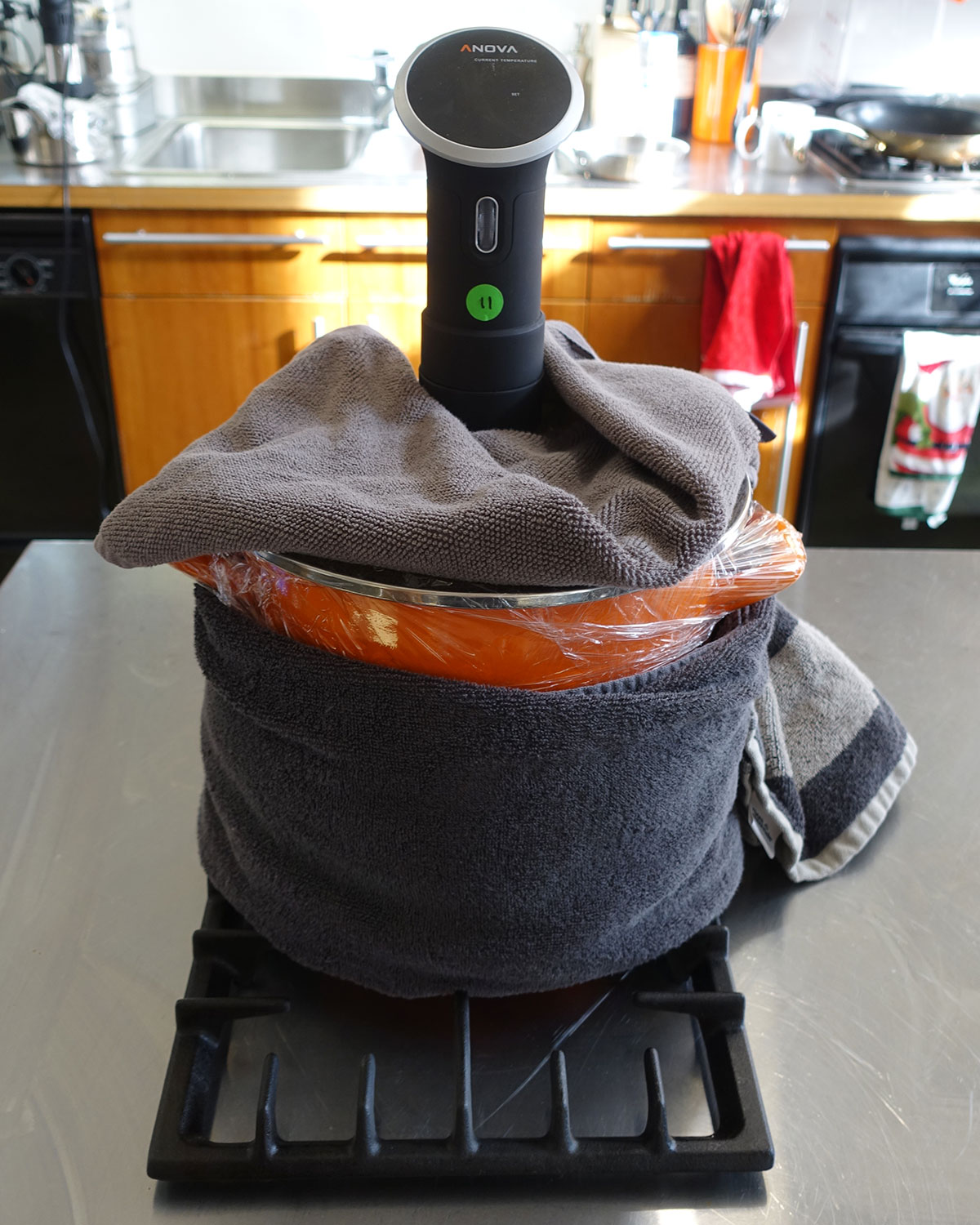
Anova
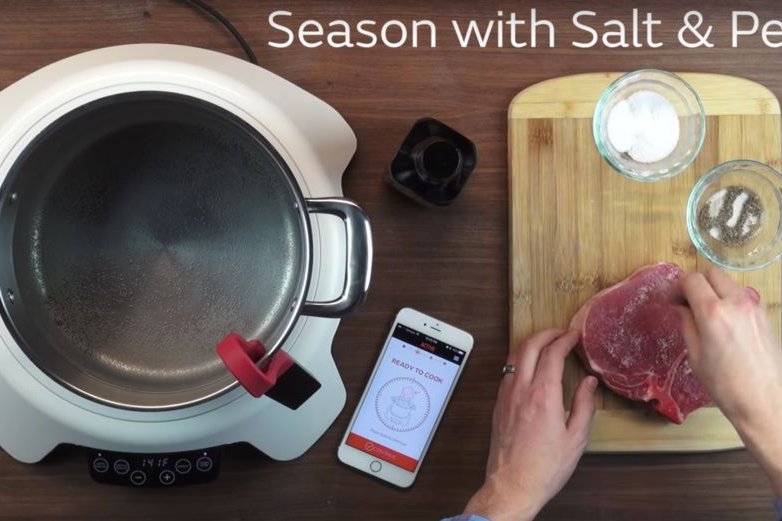
Paragon
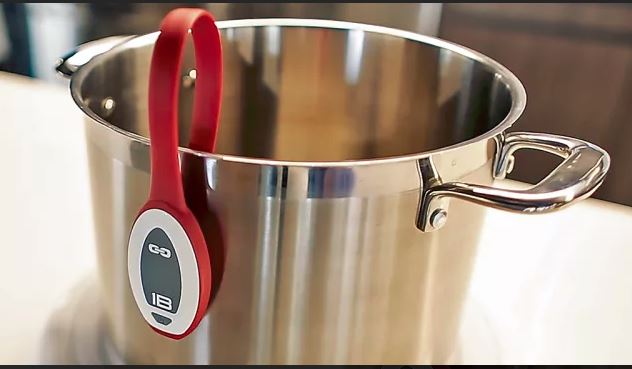
Gizmodo
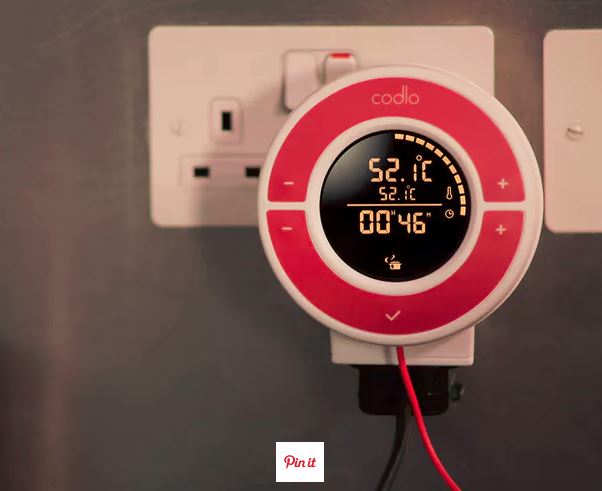
Codlo
DIY version
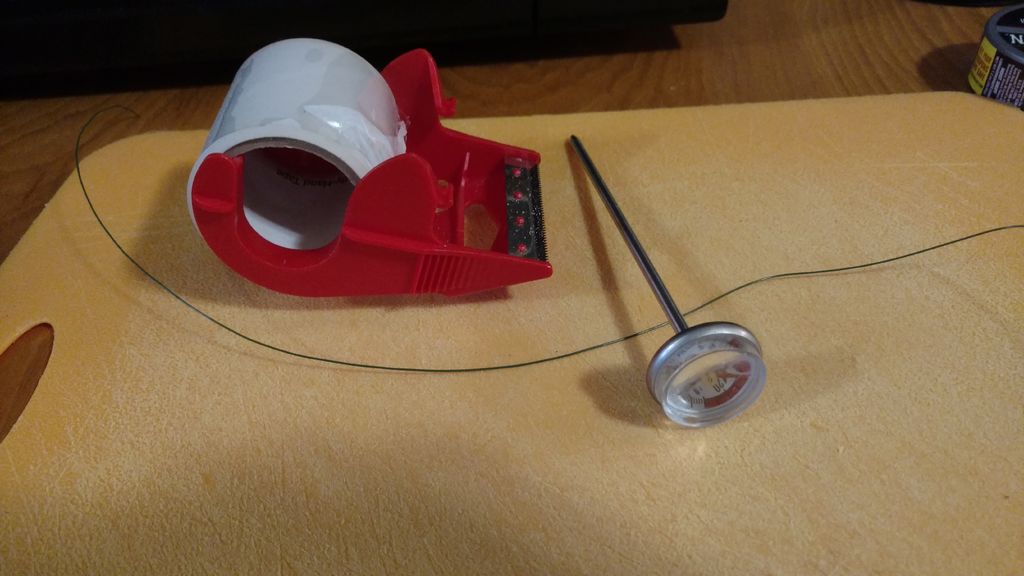
Sous-Vide-With-No-Special-Equipment
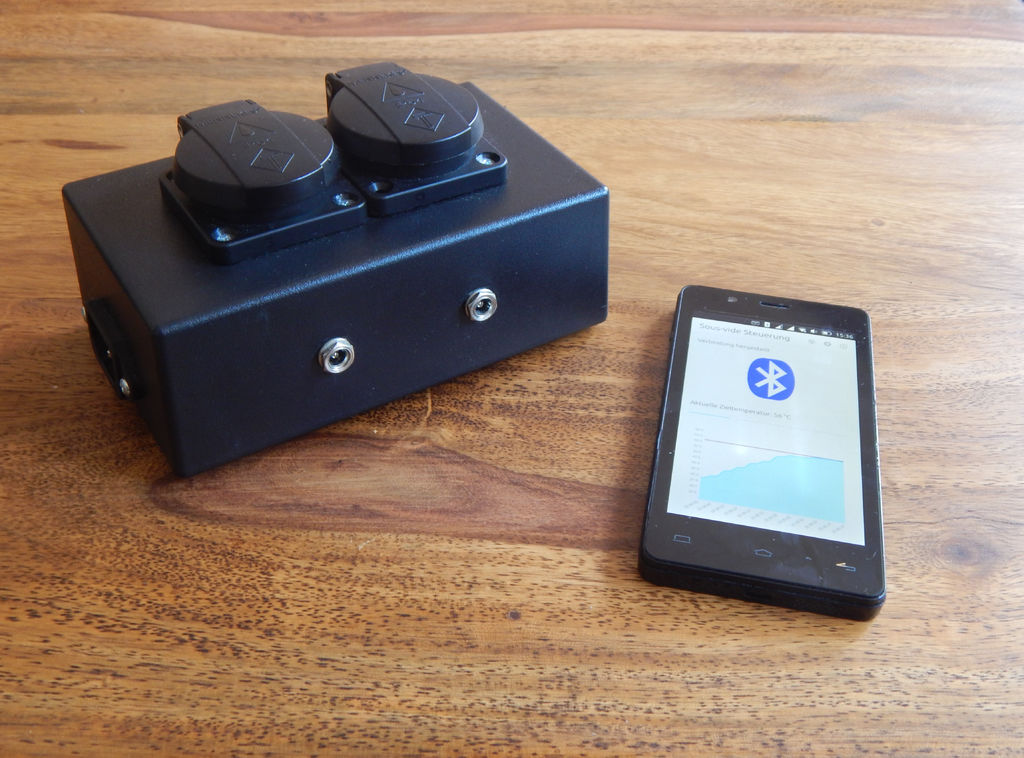
Premium sous-vide
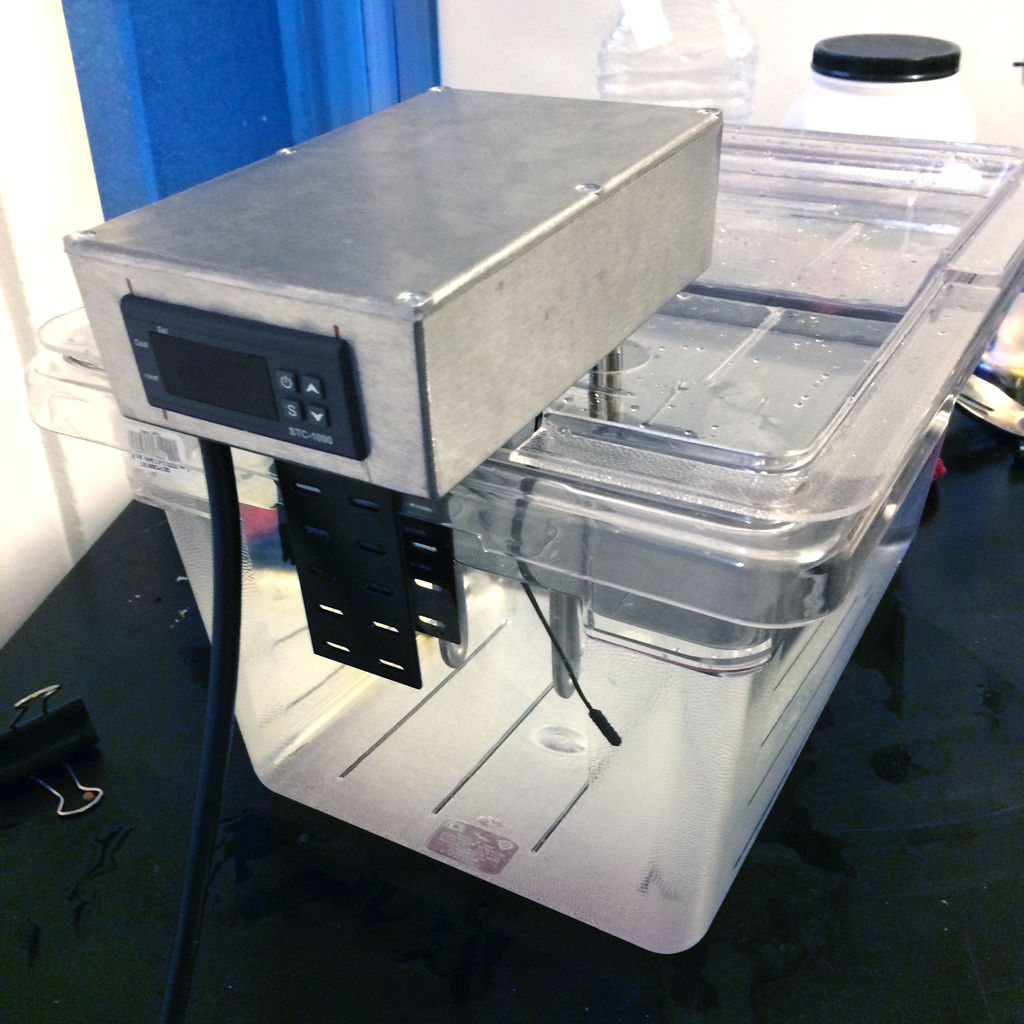
Sous-Vide-Controller
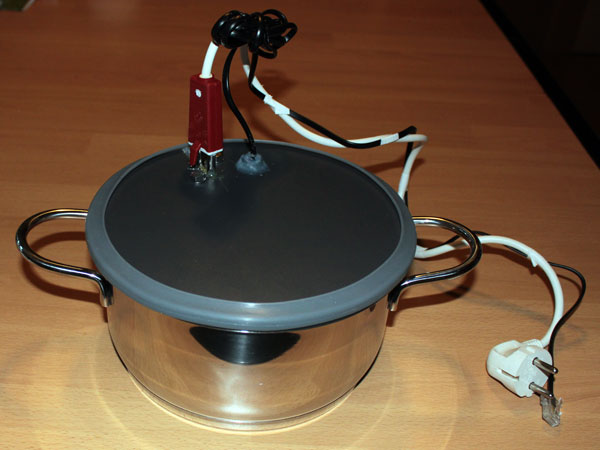
Garer

Sous-vide-cooker-yoghurt-incubator
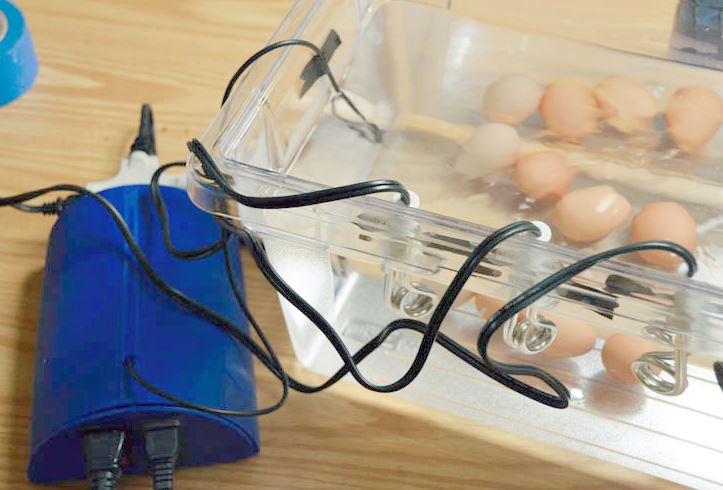
Sous-vide How to do almost anything
b>Bill OF MATERIALS
| Electronic components | Where did it come from ? | Price |
|---|---|---|
| PCB | From the lab | 3,00 EUR |
| Atmega 328 | Rs Components | 1,98 EUR |
| Crystal 16 Mhz | From the lab | 0,50 EUR |
| 2 capacitors(C1,C2)22 nf | From the lab | 0,50 EUR |
| 3 Pinheader1x3 connectors straight | From the lab | 0,30 EUR |
| 1 Pinheader1x4 connectors straight | From the lab | 0,10 EUR |
| 1 Pinheader1x6 connectors straight | From the lab | 0,10 EUR |
| 1 x Resistors(R1) 160 ohms | From the lab | 0,10 EUR |
| 1 Red led | From the lab | 0,10 EUR |
| 1 Resistors(R2)10kohms | From the lab | 0,10 EUR |
| 1 Capacitor(C4)22 nf | From the lab | 0,10 EUR |
| 1 Resistors(R4) 1oK ohms | From the lab | 0,10 EUR |
| 1 Capacitor(3)22 nf | From the lab | 0,10 EUR |
| 1 Resistors(R3)10 K ohms | From the lab | 0,10 EUR |
| 1 Capacitor(C5) 22 nf | From the lab | 0,10 EUR |
| 5 Resistors (R6,7,8,9,10) | From the lab | 0,50 EUR |
| 1 Resistors(R5)10 K ohms | From the lab | 0,10 EUR |
| 1 Transistor | From the lab | 0,10 EUR |
| 1 Resistors(R11) 4,7 K ohms | From the lab | 0,10 EUR |
| 1 Relay 5V SRD 05V | Banggood | 4,00 EUR |
| 1 Screen + module I2C | From the lab | 0,10 EUR |
| 1 Transformer 220v to 5V 1 Amp | From Local phone shop. | 5,00 EUR |
| 3 Switch button | From the lab | 0,60 EUR |
| 3 Resistors 10 K Ohms | From the lab | 0,30 EUR |
| 3 Capacitors 22 nf | From the lab | 0,30 EUR |
| 1 temperature sensor DS 18b20 | lightinthebox | 1,81 EUR |
| TOTAL Electronic componants | 20,19 EUR |
| Case of the plug | Where did it come from ? | Price |
|---|---|---|
| Filament PLA 2,85 mm red | Unic 3D | 2,00 EUR |
| Perspex Red Mat | Vink | 3,00 EUR |
| Transparent acrylic | Vink | 3,00 EUR |
| 8 x Plastic rivets | From the lab | 0,5 EUR |
| 12 Screws nylon m3 | From the lab | 0,50 EUR |
| Speaker with amplifier recuperated | Waste | 3,00 EUR |
| Plug male and female recuperated | Waste | 2,00 EUR | TOTAL Case of the plug | 14,00 EUR |
WHAT PART OF THE SYSTEMS WILL BE MADE ?
The electronic board will be drawn on KiCad and produced with the CNC. The components will be soldered.
The relay and board will be mounted on a lasercut plate. A 220V 5V transformer will be connected.
A screen and its I2C connector will be connected to the card. The box of the plug will be printed in 3D.
The front part will be lasercut. A jack will be mounted on the case 3D printed .
A temperature sensor will be equipped with a male jack.
WHAT PROCESSES WILL BE MADE ?
Electronic production
Electronic design
Embedded programming
Output device
Intput device
Electronic design
Computer controlled machining
Computer aided design
Computer controlled cutting
Computer aided design,
3D Scanning, 3D printing
Computer aided design
Computer controlled cutting
Intput device
WHAT TASKS NEED TO BE COMPLETED ?
To develop the project, the first thing was to test sous-vide cooking.
I did that before starting this session of the fabacademy (see Week 1)
It is necessary to analyse different devices that have a similar function.
For example, I tested the Anova sous-vide device and looked at the positive and negative points .
The device, like others of the same type, seems attractive at first sight.
It is inspired by laboratory materials and seemed very complicated after deeper analyse...
I dismounted the device and looked at its construction.
I also looked at videos and found 2 very interesting video showing the device and its parts.
Teardown of the Anova Precision Sous Vide Cooker
Hacking My Sous Vide (Reverse-Engineering the Anova Precision Cooker Software)
I've also been looking at user forums.
A way to approach this project and look at the maximum of things
and try to find a project that tries to solve some of the issues or problems that I have discovered.
Among them:
- The volume of these different objects.
- It is one more object in the kitchen.
- The noise.
- The complexity of the construction
- ...
WHAT OTHER QUESTIONS NEED TO BE ANSWERED ?
- How is the plug going to be water-resistant?
- What is the way to make the casing of the plug?3D printing,CNC,moulding ...?
- One encoder or 3 buttons?
- Bluetooth or not bluetooth?
- ...
WHAT IS THE SCHEDULE ?
I have 15 days to make the project, and what I did was to have a general idea of the planning and used triage every day.
At the end of each day, I was taking decisions to be on track and to be on time.
HOW WILL IT BE EVALUATED
The project will obviously have to work in order to make sous-vide cooking (see above in the text).
It will be tested and evaluated by me and then I will give it on loan to some of my friends who love to cook to test it.
I will take note of the remarks and suggestions to improve the object.
Is it reliable?
Easy to use ?
Well integrated in a kitchen?
Shockresistant?
...
HOME